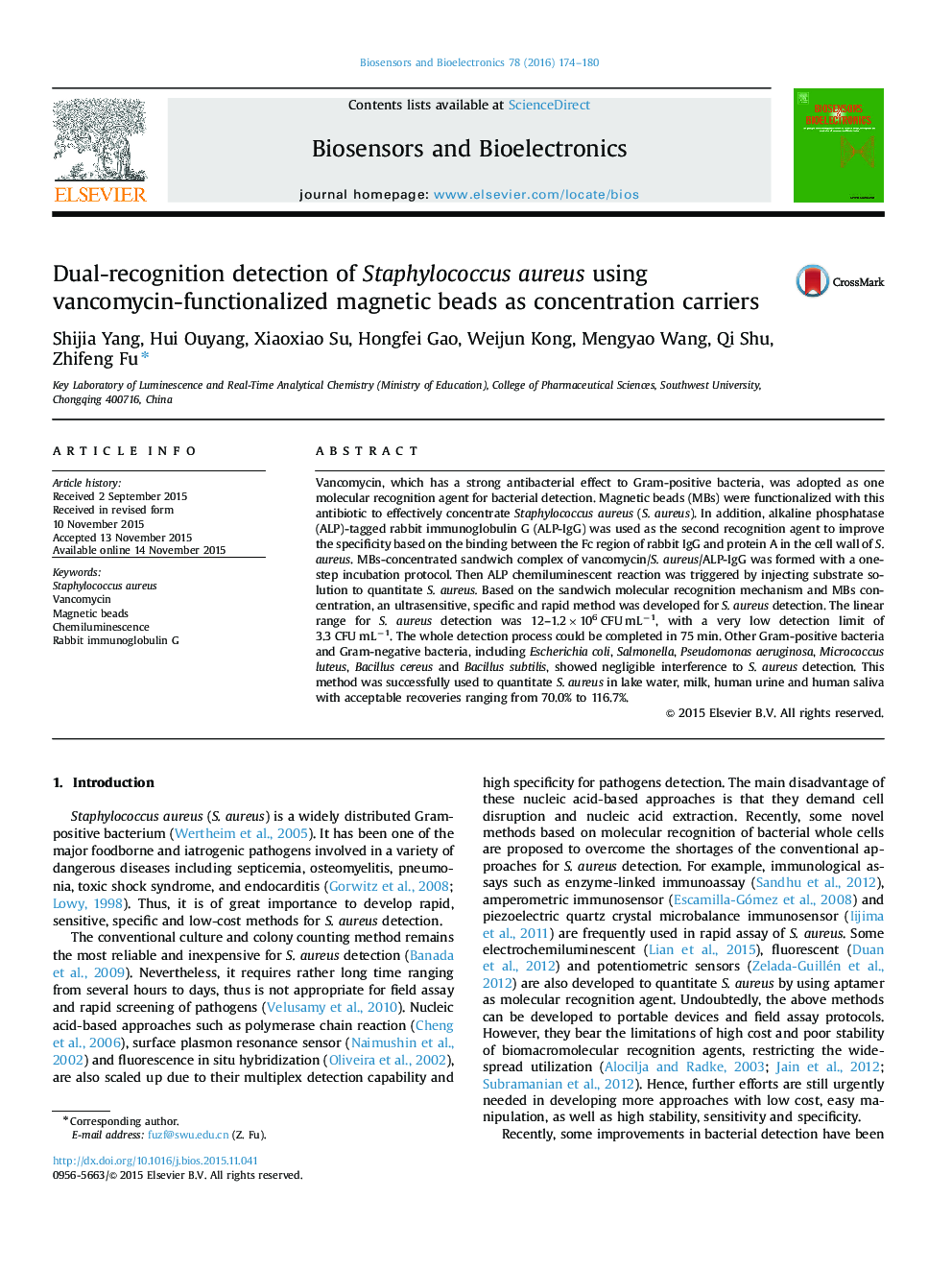| Article ID | Journal | Published Year | Pages | File Type |
|---|---|---|---|---|
| 7230903 | Biosensors and Bioelectronics | 2016 | 7 Pages |
Abstract
Vancomycin, which has a strong antibacterial effect to Gram-positive bacteria, was adopted as one molecular recognition agent for bacterial detection. Magnetic beads (MBs) were functionalized with this antibiotic to effectively concentrate Staphylococcus aureus (S. aureus). In addition, alkaline phosphatase (ALP)-tagged rabbit immunoglobulin G (ALP-IgG) was used as the second recognition agent to improve the specificity based on the binding between the Fc region of rabbit IgG and protein A in the cell wall of S. aureus. MBs-concentrated sandwich complex of vancomycin/S. aureus/ALP-IgG was formed with a one-step incubation protocol. Then ALP chemiluminescent reaction was triggered by injecting substrate solution to quantitate S. aureus. Based on the sandwich molecular recognition mechanism and MBs concentration, an ultrasensitive, specific and rapid method was developed for S. aureus detection. The linear range for S. aureus detection was 12-1.2Ã106Â CFUÂ mLâ1, with a very low detection limit of 3.3Â CFUÂ mLâ1. The whole detection process could be completed in 75Â min. Other Gram-positive bacteria and Gram-negative bacteria, including Escherichia coli, Salmonella, Pseudomonas aeruginosa, Micrococcus luteus, Bacillus cereus and Bacillus subtilis, showed negligible interference to S. aureus detection. This method was successfully used to quantitate S. aureus in lake water, milk, human urine and human saliva with acceptable recoveries ranging from 70.0% to 116.7%.
Related Topics
Physical Sciences and Engineering
Chemistry
Analytical Chemistry
Authors
Shijia Yang, Hui Ouyang, Xiaoxiao Su, Hongfei Gao, Weijun Kong, Mengyao Wang, Qi Shu, Zhifeng Fu,
